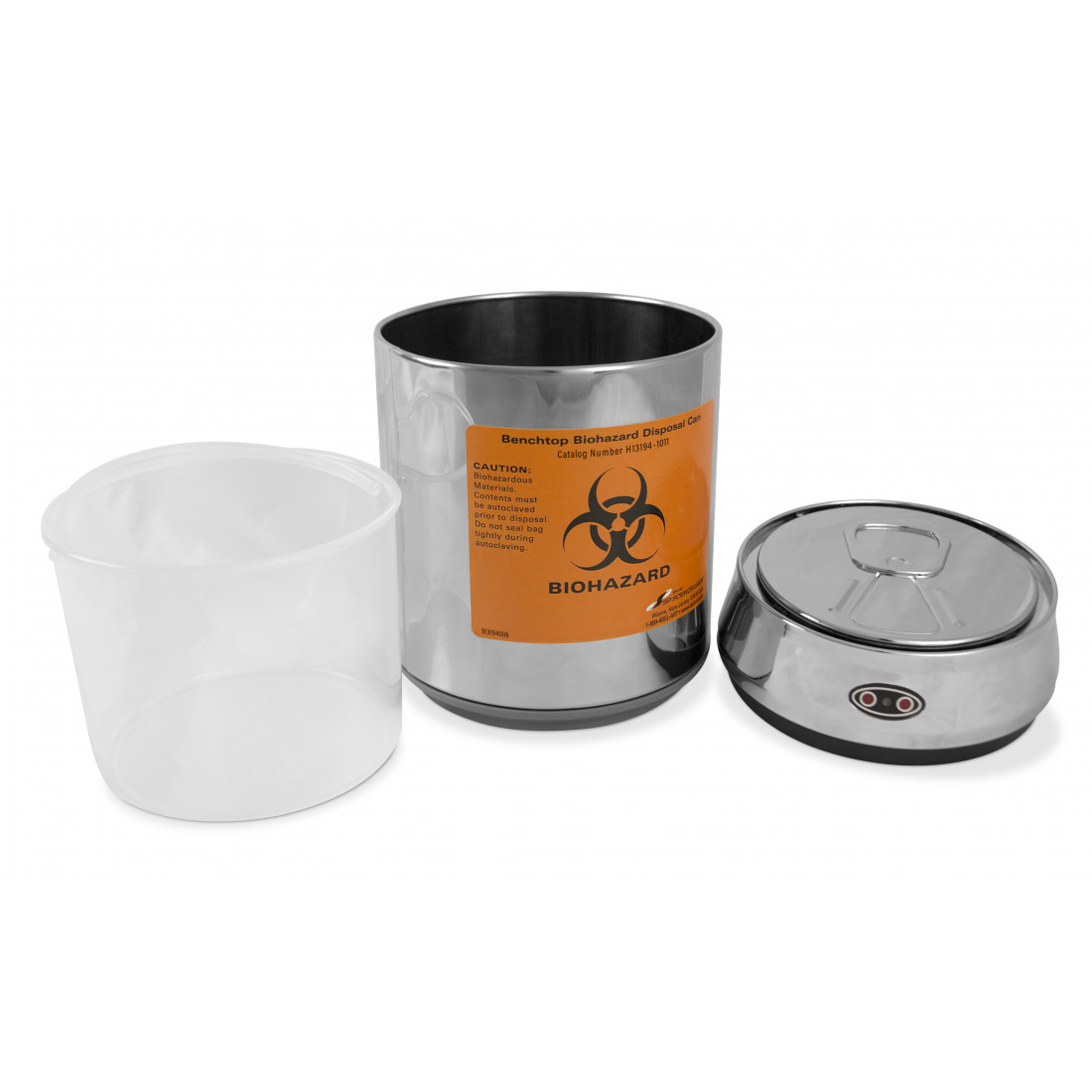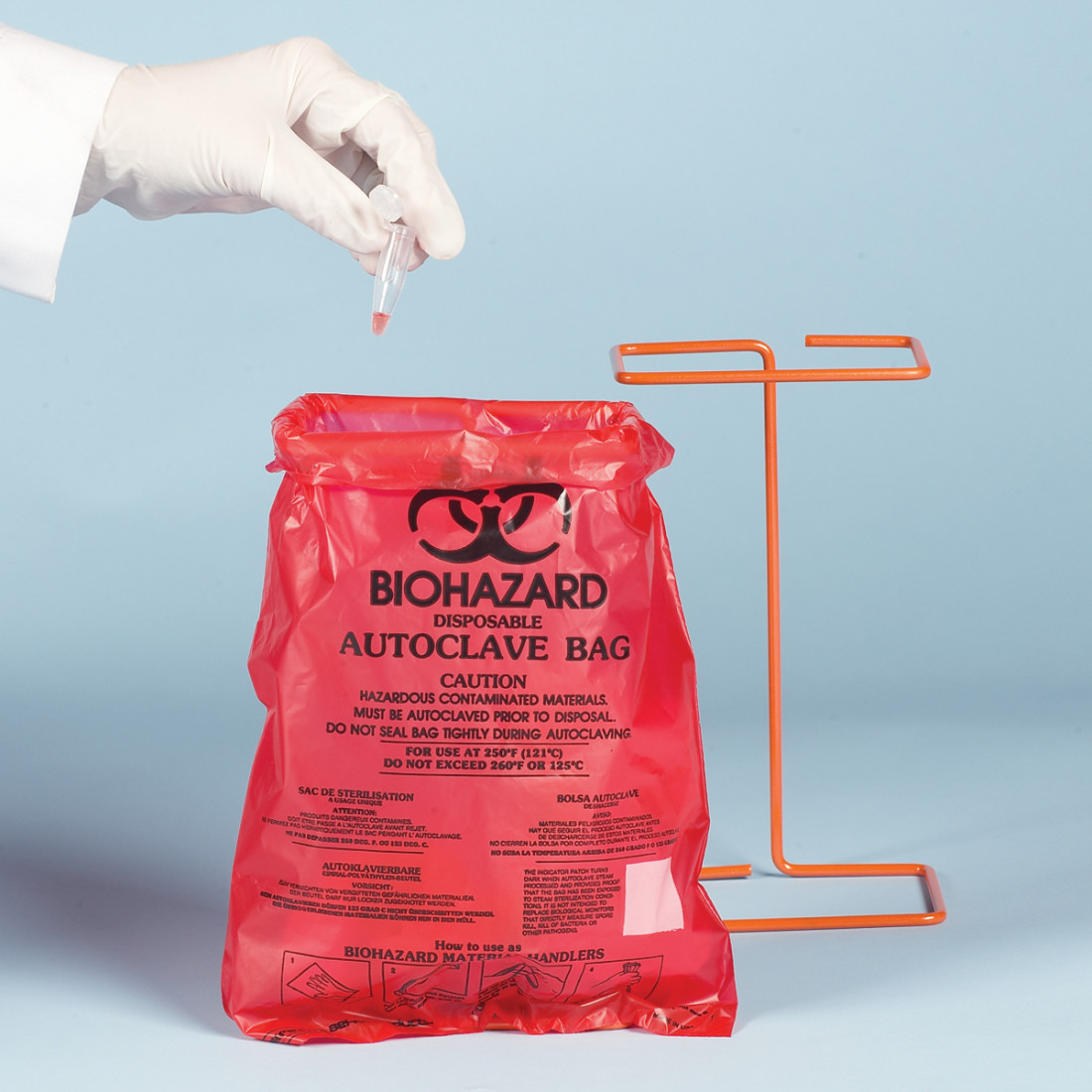
During the experiment, researchers will encounter exposure to laboratory dangerous goods. In addition to paying attention to the use of dangerous goods during operation, the proper collection and disposal of laboratory hazardous waste after use cannot be ignored.
Laboratory hazardous waste refers to waste and their pollutants that are harmful to human health, the environment or safety hazards generated while teaching and scientific research in laboratories or experimental sites.
Laboratory conventional hazardous waste is mainly divided into four categories: waste chemical reagents, barrel waste liquid, air reagent bottles and contaminated waste.
Four General methods of laboratory waste collection
1. Classification collection methodCollected according to the category nature and status of the waste.
2. Volume-by-volume collection method
Collected according to the category nature and status of the waste.
3. Similar classification collection method
Similar wastes such as nature or disposal methods, methods, etc. should be collected.
4. Separate collection method
Hazardous waste should be collected and treated separately.
However, in the
process of experimental operation, the traditional garbage bin sometimes requires
the operator to touch the lid with his hand, which is neither convenient nor
guaranteed that the subsequent experimental operation is sterile during the
experimental process. What should I do?
The existence of
small covered biohazard disposal can has well solved the temporary storage
problem of waste on the experimental operating table.
Bel-Art Benchtop Biohazard Disposal Can with Automatic Motion Sensor

Bel-Art Benchtop Biohazard Disposal Can with motion sensor cover is suitable in size and inductive, which is very suitable for placing on the operating table. The closed desktop biohazard treatment tank is suitable for handling small items that may contain odors, such as pipette suction heads and trace centrifuges. Automatic opening of the lid, hands-free use; automatic closure for safer; more hygienic operating table environment.
The
function of the Bel-Art Benchtop Biohazard Disposal Can with motion sensor
cover is based on infrared technology to automatically open the material
compartment eliminates the risk of pollution during operation. Just put your
hand about 10cm above the infrared panel, and the lid of the biohazard garbage
tank will automatically open. Within a few seconds, it will automatically shut
down again.
• 1.5 liters capacity, stainless
steel
• 25 x 25cm (10 x
10") autoclavable biohazard disposal bag (F13166-0000 or H13182-1010)
• Includes a
polypropylene liner with handle for easy emptying of contents
• Aesthetic and
durable; stainless steel body and chrome lid are resistant to bleach and easy
to clean
• Requires (3) AAA batteries (not
included)
• Compliant with CE and RoHS
certification
Cleaning guide
1.
Just wipe and clean with a wet cloth.
2.
Use ethanol (70%) or bleach to clean the plastic lining and can.
Bel-Art Bench-Top Biohazard Bags

The
color of Bel-Art Bench-Top Biohazard Bags are bright red, printed with the
biohazard symbol and sterilization indicator patch.
• Dimensions: 31.75cm x 24.13cm x
6.99cm
• Pass ASTM 1922
Tear Resistance and ASTM 1709 Dart Impact Tests
• For a space-saving
disposal unit in fume hoods or on bench tops, use with Poxygrid® Benchtop
Biohazard Bag Holder (H13193-1000) and Cover (F13193-0102)
• Steam autoclavable
at 121°C (250°F)
• Available in a box of 100 or 1000
Please click here for more information about Bel-Art Benchtop Biohazard Bags.

13 Comment(s)
虽然research paper代写 http://www.baydue.com/store/info?id=12 服务为留学生提供了便利,但其可靠性和风险问题不容忽视。在考虑是否使用这类服务时,我们应该仔细权衡其利弊,选择靠谱的机构。
我们以全面沟通、质量审查和修改服务来保障我们的可靠性。我们与客户保持密切联系,始终倾听客户需求,以确保对期望和要求有充分的了解。在论文代写完成后,我们进行多轮的质量审查,确保论文在内容和规范上都达到最高标准。为了满足每位客户的期望,我们提供免费的修改服务,以确保最终稿符合客户的要求。
i like this post.
I am often to blogging and i genuinely appreciate your articles. The article has truly peaks my interest. My goal is to bookmark your site and maintain checking choosing details.
I simply needed to appreciate you once more. I do not know the things that I would have done without the actual ways documented by you directly on such area of interest. It truly was the fearsome condition in my circumstances, however , discovering a skilled form you treated it forced me to weep with delight. I am grateful for this support and in addition have high hopes you are aware of a great job you are carrying out educating many people all through your blog. I know that you haven’t got to know all of us.
aspirin has been time tested to relieve minor pains and inflammation and it is cheap too..
aspirin has been time tested to relieve minor pains and inflammation and it is cheap too..
Amazing list of gifts and love to read your well written blog. Thanks for share
If you're looking for reliable and professional assistance with your masters assignments help, this service is a game-changer. The experts provide tailored help that caters to your specific needs, whether you're struggling with research, writing, or formatting. The team is knowledgeable in a wide range of subjects, ensuring that every assignment is completed to the highest academic standards. With timely delivery and consistent communication, they make sure you stay on track with your coursework. If you're seeking top-quality support for your masters assignments, this service is definitely worth considering for stress-free academic success.
Le code promo 1xbet: 1XFOX200. Ce code vous bonus de bienvenue jusqu'à $130 sur les paris sportifs. Ce code de parrainage 1XBET 2025 offre un bonus exclusif destiné à parier ou à jouer au casino. Avec ce code, 1xBet propose un bonus de bienvenue sur les paris sportifs pouvant atteindre 130 $ sous forme de paris gratuits. De plus, un bonus de casino est disponible jusqu'à 1 500 $ ainsi que 150 tours gratuits.
We provide support for those looking for 'Take my GED for me' or 'Take my TEAS exam' solutions. Need help with your GED or TEAS exam? We offer services so you can pay someone to take your GED or TEAS exam, hire someone for exam assistance and solutions.
Are you looking for who will 'Write My Dissertation For Me?' We provide support for those looking for 'Dissertation Writing Services' or 'Dissertation Help'. We offer services so you can 'Pay Someone To Do Your Dissertation'.
I am glad to be one of many visitors on this outstanding web site thanks for posting .
Leave a Comment